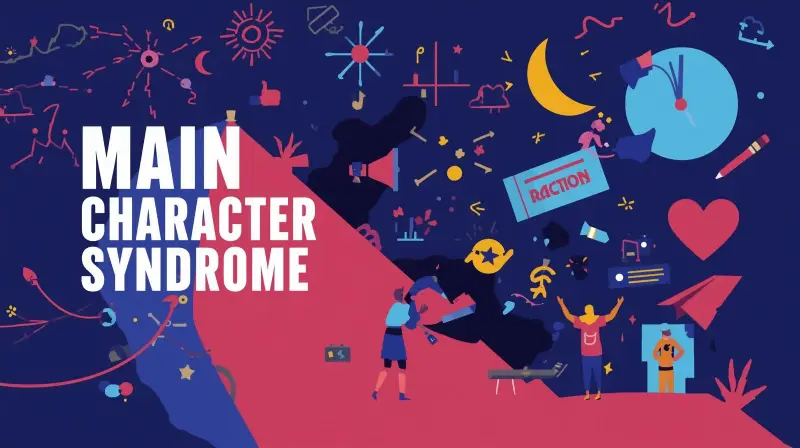Social media platforms have become an integral part of our everyday lives. We share photos from our latest trips, celebrate milestones with friends, and casually scroll through countless updates. It is incredible how quickly we have adopted these virtual communities as places to communicate, learn, and entertain ourselves. Yet despite its many perks, social media can sometimes be a minefield when it comes to etiquette. Everyone has had that moment where they stumble upon a post that feels a little too personal, or a comment so aggressive that it dampens the entire conversation. While official guidelines exist on some platforms, there are also many unspoken rules that govern our online behavior. Understanding these unwritten standards can help us avoid embarrassing situations, maintain respectful relationships, and ensure our online presence remains a positive experience. In this article, we will explore which details are okay to share and which boundaries should remain firmly in place.
The Rise of Social Media and Its Impact on Sharing

A few decades ago, communication was limited to landlines, letters, and face-to-face interactions. Today, we live in an era where any piece of information can go viral in minutes, even without our intention sometimes. This evolution has opened up a world of possibilities for expression, but it has also created dilemmas around privacy, oversharing, and digital gossip. One casual post or story might seem harmless at first, until it is viewed by distant relatives, potential employers, or strangers who screenshot and share it elsewhere. We often forget that anything posted online can remain visible for a very long time. This unprecedented level of exposure is why many people feel compelled to create personal guidelines for what they should or should not post. However, there are also collective norms that have emerged. These norms often influence what we consider tasteful, appropriate, or respectful in the online world.
Gossiping Online

Digital gossip is not restricted to phone calls or casual get-togethers. Instead, it happens through direct messages, comment sections, and viral threads. People can gossip about anything, from relationship issues to workplace drama. They might speculate about who is dating whom or comment on someone’s financial situation. They might even discuss someone’s parenting style if a parent posts about their child frequently. Controversial or emotional content tends to fuel the rumor mill even further, especially when it involves sensitive topics. This behavior stems from a natural curiosity about other people’s lives, but it can turn problematic when posts are taken out of context or privacy boundaries are crossed. Recognizing this tendency to gossip is the first step toward understanding why certain details should be kept private. Being mindful of what triggers gossip helps us refrain from oversharing and reminds us to respect the privacy of others.
Oversharing and Where to Draw the Line

Oversharing happens when someone reveals more personal or sensitive information than is suitable for a broad audience. It might come in the form of long, detailed posts about every emotional struggle, complaints about coworkers, or graphic descriptions of health issues. People overshare for different reasons. They might be seeking validation or empathy, or they might simply be caught up in the impulse to document every moment of their day. While sharing aspects of our lives helps build connections, it can also backfire when the details become too intimate or distressing. Instead of inviting support, oversharing can overwhelm followers and even damage relationships. One trick to avoid this pitfall is to pause before posting. Ask yourself whether you would feel comfortable if a future employer, a distant acquaintance, or a relative saw what you are about to share. If the answer is no, it might be best to keep it private.
Understanding Boundaries Between Public vs. Private

For many users, the line between public and private has become blurred. Social media feeds create an illusion of a tight-knit community, but in reality, our audiences can include classmates, coworkers, neighbours, or even people we have never met in person. Something that feels harmless among close friends might seem inappropriate to a professional contact. These blurred lines encourage us to think carefully about privacy settings and consider who will see our posts. Even though social media has options to restrict who sees what, but anyone among those followers can easily repost or share your posts without your notice which can lead to drastic discomfort and anxiety. Some platforms allow for private groups and invite-only events, which can be more suitable for discussing personal matters. It is also helpful to maintain separate personal and professional profiles if your work requires online interaction. Respecting privacy boundaries involves more than just protecting your own information. It also means staying mindful about what you share regarding others, such as your friends’ personal news or your children’s images, especially when those details might not be yours to broadcast.
Tagging Etiquette

Tagging friends, acquaintances, or businesses can be a convenient way to share content and draw attention to certain people or brands. However, tagging without a clear purpose can come off as needy or invasive. When you tag someone, you effectively pull them into a conversation. If that person or page is not relevant to the content, you risk cluttering their notifications and possibly irritating them.
Additionally, some people prefer not to be tagged in photos that might compromise their privacy or reveal their whereabouts. Before tagging anyone, it is important to double-check whether they would appreciate it. If you are unsure, ask for permission through a quick message. Remember that good tagging etiquette can strengthen your connections, while bad tagging behaviour can damage trust and lead to awkward misunderstandings.
The Awkwardness of Liking Your Own Post

Liking your own post may seem like a harmless gesture, but it often appears self-congratulatory to others. In real-world conversations, it is unusual to applaud your own statement, so it makes sense that many social media users feel strange when they see someone like their own content. Social media “likes” are typically seen as endorsements from other people, signifying support or agreement. When you give yourself that endorsement, it can come across as if you are trying too hard to seek validation. A more genuine approach is to trust that your friends and followers will engage with your post if they find it valuable or interesting. If you absolutely love something you shared, you can still express that by responding to comments or clarifying the story behind the post in the caption.
Keeping Personal or Private Information Scarce

While it can be nice to introduce elements of your personal life online, there are certain details that should remain off-limits. Sensitive information like your home address, phone number, work schedule, and private family matters can pose significant risks. Even if you trust your social media circle, leaks can occur, and identities can be stolen. Keeping these details scarce is not about living in fear, but about exercising caution. Many people use social media as a personal diary, forgetting how visible it is. If you are excited about a new house or car, consider how much information you really need to show. A simple picture might be enough to share your joy without revealing specifics that could compromise your safety. Experts suggest customizing privacy settings to limit your audience and occasionally reviewing what posts are visible to the general public.
Going Easy on Public Displays of Affection

We get you can’t contain your love for your significant other and want the world to witness your love story, but it can sometimes make your followers a little uncomfortable rather than appreciative. Social media provides an opportunity for couples to celebrate their relationship, but constant, over-the-top displays of affection can create annoyance rather than admiration among friends and followers. While a sweet anniversary post or a heartfelt birthday message is generally well-received, posting intimate details or multiple love notes every day can overwhelm your audience. In some cases, it can appear performative or boastful. Of course, it is wonderful to express love and appreciation for your partner, but it helps to do so in moderation. This consideration also extends to tagging your significant other in every single post or flooding your story with countless couple selfies. Striking the right balance will allow you to share your happiness while respecting your followers’ preferences. If you find yourself wondering whether your PDA might be too much, consider whether you would be comfortable with others doing the same.
Handling Sensitive Topics with Care

Social media has enabled people to raise awareness about important social issues and engage in constructive dialogue. However, it can also become a battleground where emotions run high and tempers flare. Posting about sensitive topics in an aggressive manner often alienates potential allies and can spark hostile interactions. Politics, religion, and social justice causes can benefit from thoughtful discussion, but it is easy for disagreements to escalate when they are put on public display. If you plan to post on these topics, consider speaking from personal experience or calmly stating your point of view. Invite conversation rather than confrontation and remember that not everyone shares your background or beliefs. When it comes to discussing sensitive issues, tone and approach are everything. Engage with empathy, and be open to listening and learning, even if you do not end up agreeing.
Asking to Take Things Offline Prematurely

Sometimes, conversations on social media lead us to want deeper or more personal interactions. It is natural to want to move from public threads or comments to private messages, or from private messages to real-life meetups. However, pressuring someone to leave the platform for a phone call, video chat, or real-life meeting before they feel comfortable can create unease. Trust takes time to build, especially in a virtual context. If someone is not ready to share their phone number or meet in person, respect that boundary. Pushing too hard can come across as desperate, intrusive, or even predatory. The key is to gauge the other person’s level of comfort. Gently suggest taking the conversation to a private channel if it seems like a natural progression. If there is any hesitation, step back and continue the discussion in its current format until they feel more at ease.
Steering Clear of Misleading Content

With so much information floating around, it is easy to stumble upon news stories, videos, or memes that appear credible but are actually misleading. Spreading misinformation can harm your reputation and potentially lead others down the wrong path. Before sharing content that makes strong claims, do a quick credibility check. Look for reputable sources and see if the story has been verified by multiple outlets. If the information is questionable, it is safer to wait for further clarification. Even well-intentioned people can accidentally share false news, especially when the subject triggers strong emotions. Beyond factual inaccuracies, misleading content can also include exaggerated clickbait, deceptive editing, or out-of-context quotes. When in doubt, ask yourself whether the post is helpful, accurate, and considerate. Responsible sharing makes social media a healthier environment for everyone, and it strengthens your credibility as a user who values honesty.
Minding Your Tone and Context

Tone can be difficult to convey through text alone. Jokes, sarcasm, or lighthearted banter can easily be misunderstood if your audience lacks the context of your voice, facial expressions, or relationship history. An innocent remark could come off as passive-aggressive, while a sarcastic comment might appear outright rude. When posting or commenting, consider how strangers or casual acquaintances might interpret your words. Emojis, GIFs, or disclaimers can help clarify your meaning, but these tools have their limits. If you sense that your comment might be taken the wrong way, rephrase it to be more neutral or offer a brief explanation of your intention. Reflecting on your tone not only prevents arguments but also fosters healthier relationships. A quick review of your words can save you and others from the headache of unnecessary conflict.
Respecting Cultural and Personal Differences

Social media connects people from a variety of backgrounds, cultures, and belief systems. While this diversity can enrich our perspectives, it also requires a degree of sensitivity when sharing content or engaging in discussions. What might be considered acceptable or humorous in one culture could be offensive in another. In addition, personal and family norms vary widely. Someone might be comfortable talking about certain topics in their household, while others might find the same topics taboo or embarrassing. Respecting these differences is a key component of social media etiquette. Before joking about someone’s accent, customs, or holidays, think about how your words might make them feel. This does not mean you must tiptoe around every conversation, but maintaining a sense of awareness can prevent misunderstandings and foster meaningful connections with people across the globe.
Consequences of Breaking Social Media Etiquette

Failing to follow these unspoken rules can have repercussions that go beyond the digital realm. Friendships can sour when personal boundaries are crossed, and family members might take offense if sensitive or private matters are shared publicly. In professional settings, oversharing or aggressive posts can tarnish your reputation, leading to missed job opportunities or damaged business relationships. Once harmful or embarrassing content is online, it can be difficult to remove it completely, as screenshots and archives often persist even after the original post is deleted. The long-term effects of thoughtless posts can linger, which is why many people urge caution when updating social media profiles. By practicing good etiquette, you safeguard not only your relationships but also your own well-being and future prospects. Respectful online behavior can open doors, whereas disregard for these unwritten guidelines can close them just as quickly.
Finding the Right Balance Between Personal and Public

Steering the line between authenticity and restraint is a skill that grows with practice. You do not have to hide who you are, but you should strive for a thoughtful approach to what you share. Striking the right balance allows you to connect with your audience while preserving some sense of privacy. If you are uncertain whether something is too personal, consider how you would feel if someone else posted the same content about you. Use your intuition when deciding the level of detail to include in your posts. You can be authentic by sharing general stories or snippets of your day without divulging every intricate detail. In many cases, subtlety can spark curiosity and prompt people to engage with you in a more meaningful way. By leaving a bit of mystery, you open the door to deeper conversations through direct messages or offline chats.
Staying Empathetic and Considerate

At its core, social media is a space for interaction, community building, and self-expression. Keeping empathy at the center of your online presence helps you remain respectful, even during difficult conversations. Whether you are congratulating a friend on their achievement, consoling someone who has suffered a loss, or debating a hot-button issue, empathy ensures that you see the human behind the username. Listen to their perspective and remember that each user has a unique emotional landscape. If you find yourself in a debate, focus on the ideas rather than hurling personal attacks or accusations. Conflicts can usually be resolved more quickly when participants treat one another with kindness. This considerate approach extends to how you handle disagreements or miscommunications. Apologizing for a misunderstanding or clarifying your point can defuse tension and keep relationships intact, despite the occasional online misstep.
Conclusion
Social media may seem like a casual environment, but it still requires care and thoughtfulness to maintain positive interactions. By following these unwritten rules, you can avoid awkward moments, protect your personal information, and cultivate healthier relationships. Always think before tagging others, especially if they prefer not to be tagged. Resist the urge to like your own post and keep a watchful eye on how much you reveal about your private life. Try to keep public displays of affection tasteful, and approach sensitive issues with a calm and respectful tone. If you sense that someone is not ready to continue a conversation offline, give them space.
Above all, be genuine without compromising your safety or anyone else’s comfort. When you prioritize empathy and honesty, your social media experience can be not only exciting and entertaining, but also deeply rewarding. By consciously choosing what to share and what to keep to yourself, you set a positive example that encourages others to follow suit. This mindset creates a richer and more harmonious digital world for everyone involved.
Meta Description: Explore the unspoken rules of social media etiquette, from avoiding oversharing to respectful tagging, and discover how to keep posts both safe and engaging.




